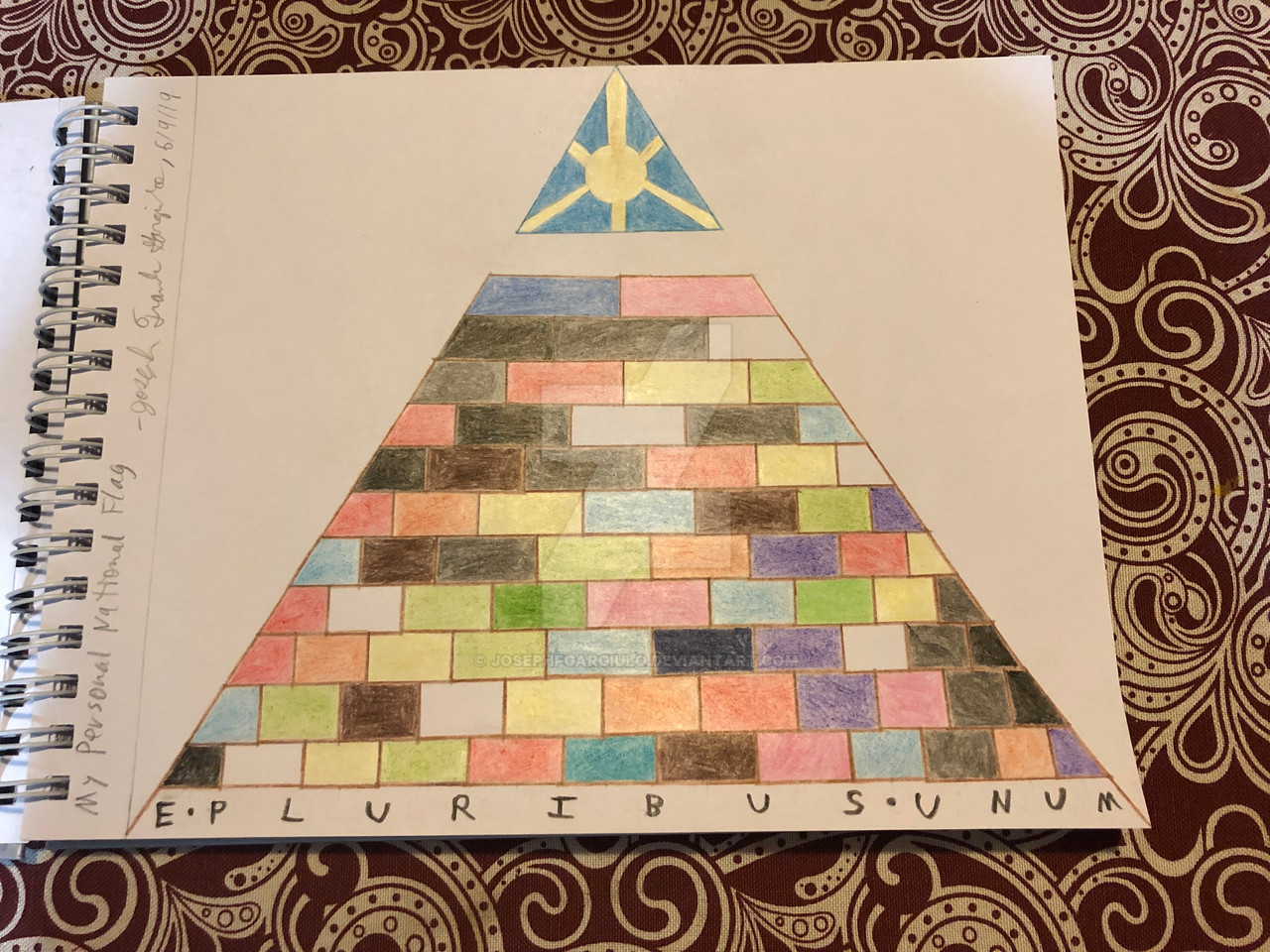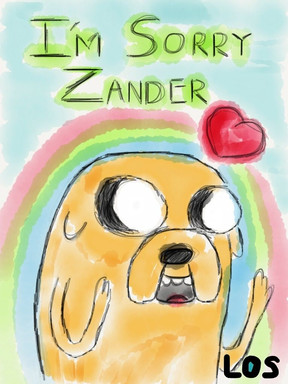HOME | DD
 JosephFGargiulo — Personal Flag
JosephFGargiulo — Personal Flag

#drawing #flag #greatsealoftheunitedstates #nationalflag #vexillology #epluribusunum #eyeofprovidence #personalflag #art #vexillography #outofmanyone
Published: 2019-06-23 00:52:48 +0000 UTC; Views: 418; Favourites: 2; Downloads: 0
Redirect to original
Description
If I were the ruler of my own nation, then the above drawing would be the design of my national flag.The white of the field and pyramid foundation represents purity, righteousness, truth, and clarity. The Latin words "E pluribus unum" mean "Out of many, one," which represent the diversity of my would-be country under one rule. This, in turn, serves as the foundation on which my country would be built. The words are written in black to signify strength, sturdiness, and finality. The two dots separate the words from each other so that they could be read easily.
The unfinished pyramid is based on the design on the reverse side of the Great Seal of the United States. The brown mortar of the lower part represents the cohesiveness of the different makeups of the nation. It also stands for the unfortunate rigidity, conflict, and misunderstanding that may arise when these varied groups come in contact with one another. The empty space between the two parts of the pyramid symbolizes the work that still needs to be done for the nation to truly be complete and whole. The top part of the pyramid should have within it the Eye of Providence, but I substituted it with a shining sun in a clear blue sky. I thought that this image would be better because it is more secular, and therefore would represent my citizenry better. The top portion has no border like the bottom part to signify finality, nirvana, oneness, wholeness, and freedom from constraints.
There are thirteen layers in the pyramid. Thirteen is usually considered an unlucky number, but the United States started with 13 states, a baker’s dozen consists of a group of 13, and the Ten Commandments and Holy Trinity add up to 13. So, because there are good and bad examples of the number 13, the number of layers in the pyramid signify the good and bad things that affect a diverse nation.
The bottom layers of the pyramid—that is, Nos. 2 to 12 going from top to bottom—have bricks that equal the layer that they are in. They are also color-coded to reflect a specific aspect of society. I tried to assign appropriate connotations to appropriate colors, have the colors not overlap, and play with the idea of a left-right spectrum in some cases. For the most part, they are supposed to represent different peoples in terms of who they are, what they are, where they come from, etc. Layer 8, which is devoted to different professions, is based on the Dewey Decimal System of classification. In fact, I wanted to show the diversity of my land so much that one layer consists of the differing kingdoms of life.
In any event, here’s my explanation of each layer:
• 2: gender: light blue (men), pink (women)
• 3: religion: black (believers), gray (agnostics), white (atheists)
• 4: ages: gray (65 and older), red (18 to 64), yellow (13 to 17), green (12 and younger)
• 5: politics: red (conservatives), black (unregistered voters), white (centrists), gray (independents), blue (liberals)
• 6: race and ethnicity: black (blacks), brown (Hispanics, Indians, Middle Easterners), gray (mixed-race and other peoples), red (Native Americans), yellow (Asians), white (whites)
• 7: kingdoms of life: red (animalia), orange (archaea), yellow (bacteria), blue (chromista), brown (fungi), green (plantae), purple (protozoa)
• 8: professions: blue (historians and geographers [900]), brown (artists and athletes [700]), gray (philosophers and psychologists [100]), green (social and pure scientists [300, 500]), orange (clergy [200]), purple (writers and researchers [400, 800]), red (health fields [000, 600]), yellow (technology [000, 600])
• 9: social classes: red (upper class), white (white-collar workers), green (upper middle class), yellow-green (middle class) pink (pink-collar workers), blue (blue-collar workers), lime green (lower middle class), yellow (lower class), gray (unemployed)
• 10: sexuality: red, orange, yellow, green, blue, indigo, purple, black, gray, white (colors of the rainbow and other LGBTQ flags)
• 11: nationality: blue (independent countries), green (one-nation citizens), brown (natural-born citizens), white (naturalized citizens), yellow (multi-nation citizens), orange (subnational peoples), red (dependent countries), purple (emigrants and immigrants), pink (migrant workers), gray (refugees), black (people with no citizenship)
• 12: geography: black (Africa), white (Antarctica), yellow (Asia), green (Europe), red (North America), turquoise (Oceania), brown (South America), pink (international waters), blue (national waters), gray (neutral lands), orange (Marie Byrd Land), purple (unrecognized countries)
The flag was made on 6/9/19 on white sketchbook paper with a pencil, a ruler, and colored pencils. The picture was taken on 6/22/19. Please do not share or download this picture without my permission. Thank you.
Related content
Comments: 2

👍: 0 ⏩: 1

👍: 1 ⏩: 0























